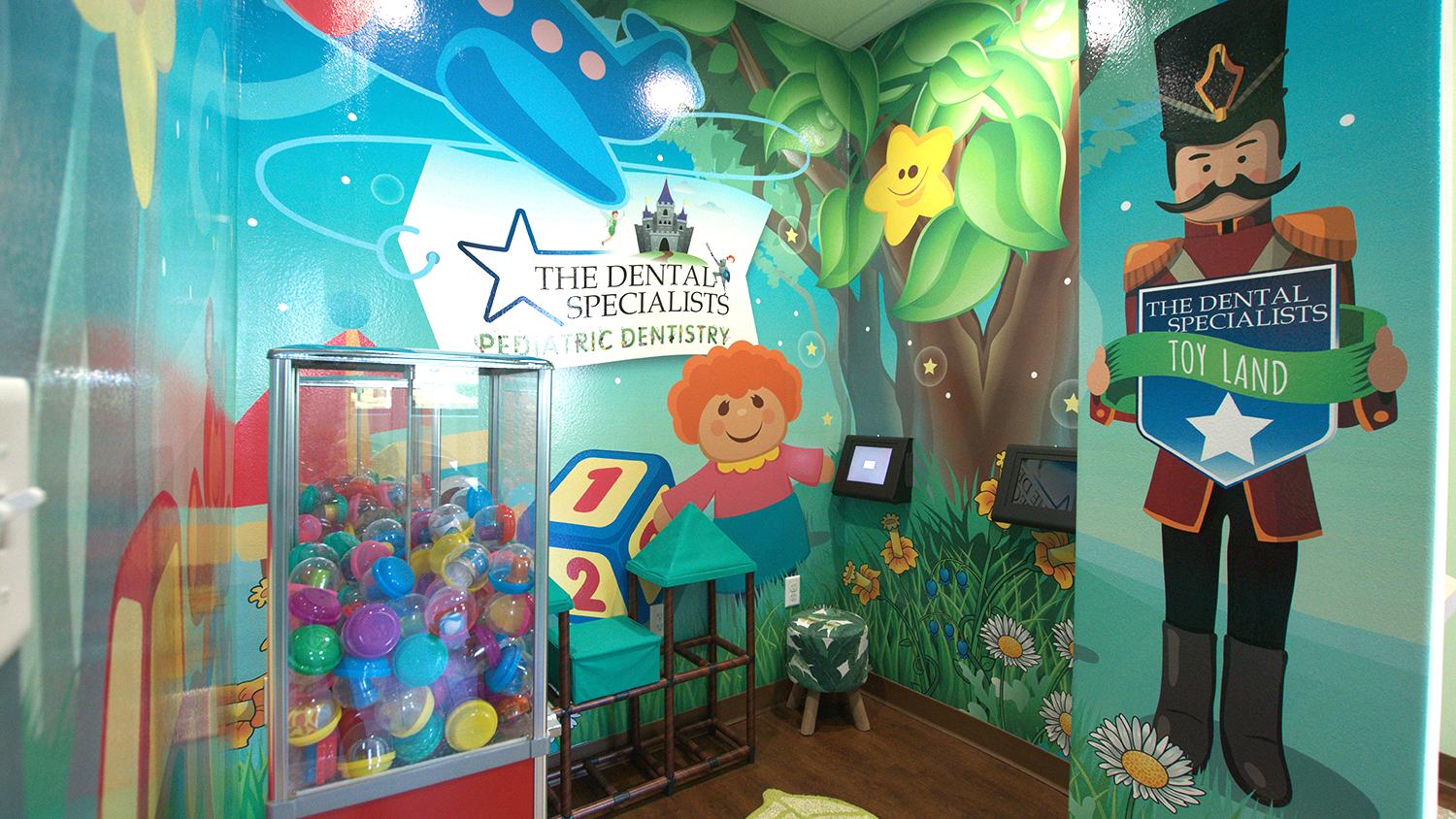
6 minute read
What’s Got Your Tongue?
by DFWChild
TONGUE: ©ISTOCK
WHAT’S GOT YOUR TONGUE? taking tongue-tie seriously
Advertisement
WORDS CARRIE STEINGRUBER
Kailas was a teeth-grinder for as long as his parents could remember. He also wet the bed more nights than not. “He was already 7 years old and we had to have him on Pull-Ups,” says his mom, Angela Brennan.
He had attention issues. Breathing issues. Growth issues—doctors said at age 8 he had the bones of a 5-year-old.
Thanks to his tongue, of all things.
“From the tip of the tongue to the tip of the toe is one fascial tissue,” explains Dr. Dunia Korous, Kailas’ dentist, who practices at Millennium Smiles in Frisco. “When the tongue is restricted, it pulls everything together. When the lower jaw gets narrow, the upper jaw follows, and when the upper jaw follows … the airway also gets a little narrower.”
In Kailas’ case, the restriction is ankyloglossia, or tongue-tie. A pesky strip of tissue anchors the tip of his tongue to the floor of his mouth, limiting the tongue’s movement and, unfortunately, kicking off a conga line of other symptoms.
You might associate tongue-tie with latching problems and nipple pain during breastfeeding. As more mamas get their infants’ troublesome tissue cut or lasered, some doctors have labeled the treatment a fad—at best, uninformed scaremongering, and at worst, a scheme by practitioners to profit from unnecessary procedures.
Then there are kids like Kailas, and adults like our magazine’s creative and content director, whose tongue-ties have contributed to problems with sleep, breathing, posture and focus, among other woes. Tongue-tie appears to have compounding effects over time—literally from head to toe—yet dentists and pediatricians may not look for it.
THE MORE YOU KNOW
How is it that many parents and professionals are in the dark about the effects of untreated tongue-tie? Dr. Stacy Cole of Clear Fork Healthy Dental Care in Fort Worth says dental programs have a lot to cover in order to satisfy certification requirements, and there’s simply no more room in the syllabus.
Korous says the symptoms also evade detection because parents don’t know to ask, and kids don’t think to tell. “They don’t even talk about it because it’s the norm—it’s what they’ve been dealing with all their life,” she explains.
Ideally, tongue-tie is caught on day one; in fact, Brazil requires every infant to be examined for tongue-tie before leaving the maternity ward. When it’s not caught, kids and adults may show a range of symptoms, like Kailas, or just one or two. Thankfully, more professionals are beginning to recognize the signs and recommend treatment.
SNIP IT IN THE BUD
The fix for tongue-tie sounds simple (snip, snip!) but experts say the brief procedure is best with a side of myofunctional therapy—that is, a retraining of the mouth muscles. Patients are prescribed tongue exercises in order to learn to swallow correctly, increase their range of motion and prevent the clipped tissue from regrowing. These glossal workouts might include touching the upper lip and licking a Popsicle.
Korous believes in starting therapy before the tongue-tie release so that the tongue knows what to do once it’s free to move about the mouth.
Though Kailas hasn’t had his release procedure yet, for months he stood in front of the bathroom mirror alone, three times a day, to move his tongue.
“He gets a little embarrassed doing the facial exercises with people watching him,” Brennan reveals, adding that toys and other rewards motivated her son to keep it up.
Cole recommends facial exercises too but says the release is most important—even without therapy, kids can adapt. “It’s better to do it poorly than to not do it,” he says.
Here’s the thing about tongue-tie: Even dentists who agree on its significance don’t agree on exactly how it ought to be fixed or the extent of its impact. For example, Korous
all tied up
Symptoms to watch for (or ask your child about) that might indicate a tongue-tie:
• Trouble latching or pain during breastfeeding • Picky eating • Speech delays or articulation problems • Snoring • Mouth breathing • Attention and behavior problems • Teeth grinding • Bedwetting • Headaches • Poor dental health • Forward head posture
believes that tongue-tie can lead to sleep breathing disorders like sleep apnea; Cole says that tongue-tie may exacerbate airway issues but isn’t the cause.
Both absolutely agree that correcting tongue-tie can change people’s quality of life, even in small ways.
After doing thousands of tongue releases, Cole went under the laser himself. “I thought, You know, when I get that released, I’ll be leaping tall buildings,” he remembers. “Nothing. I could not tell a thing, except it was sore for a few days. About three weeks later, I thought, You know, I can turn [my neck] to my left and my right and it doesn’t catch anymore. ”
Over many months, Kailas has been doing facial exercises and wearing mouth appliances to expand his jaw. Though his tongue is still tied, he’s already out of Pull-Ups.
Brennan is helping spread the word about tongue-tie to her friends and neighbors with children. “If you don’t start it and correct it early,” she says, “then it’s gonna get even worse as they get older.”
Jeffrey D. Holt, DDS, MS Pediatric Dentistry 9x Mom Approved
A board certified specialist in Pediatric and Adolescent Dentistry, Jeffrey Holt is the founder of KidsDental, a favorite of both kids and parents alike in the Dallas area. Dr. Holt has strategically changed the way children experience dentistry by providing positive and exciting atmospheres custom designed with children’s needs in mind. Kid-friendly diversions like SuperSlide PlayScapes, video games, trendy music, cool light shows, and inviting colorful dental chairs equipped with movies help keep each visit fun! With an emphasis on early childhood intervention, cosmetic restorative Pediatric Dentistry, and Orthodontics, Dr. Holt and his expert team focus on specialized and preventive dentistry during the growth and development years. A commitment to the highest level of quality care assures a healthy smile for life. Education: DDS, University of Oklahoma College of Dentistry; Post-Doctoral MS, Baylor University; Certificate of Pediatric Dentistry, Baylor College of Dentistry; Specialty Residency Programs, Children’s Medical Center of Dallas and Texas Scottish Rite Hospital for Children Affiliations: American Board of Pediatric Dentistry; American Academy of Pediatric Dentistry; Texas Academy of Pediatric Dentistry; American Dental Association; Texas Dental Association; Dallas County Dental Society; Greater Dallas Society of Pediatric Dentists; former Clinical Director and Professor, Baylor College of Dentistry and Texas Scottish Rite Hospital for Children Board Certified: Diplomate, American Board of Pediatric Dentistry

KidsDental Plano: North Dallas Tollway @ Parker • 972-378-5437 Carrollton: Hebron @ Josey • 972-394-2140 kidsdentalonline.com

Smiles Happen Here

Liny John, DDS
Infants, Toddlers, Children, Teens, Special Needs

Adam Preece, DDS 4x Mom Approved
Whether your child’s dental needs are simple or complex, we’re ready to handle them, and we’ll make the experience easy every time.


